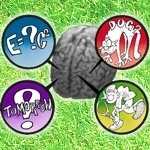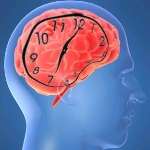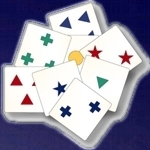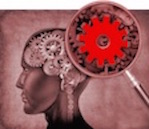Research
LIFESPAN - We investigate how the brain changes with age and how these modifications are related to different cognitive functions. For this purpose different techniques are employed such as EEG, tES, TMS and fNIRS. Our research is focused on the changes in electrophysiological, hemodynamic and behavioral measures associate with each phases of the life.
 Infants/children
Infants/children
Our research in newborns and infants aims at bridging the theoretical frameworks of developmental cognitive psychology on one side, and developmental neuroscience and psychobiology on the other. In particular, by means of different techniques (EEG/ERPs, NIRS, fMRI), we are focused on the subtle interaction between "nature and nurture", as regards to the emergence of different cognitive domains such as attention, memory, executive functions and language. At the beginning of the third millennium it is commonly accepted that the mental abilities of infants and adults are the result of complex interactions between genetics and the environment. This interaction, however, remains scarcely understood. Developmental changes in cognition are the result of underlying structural and functional brain maturation. However, bridging the anatomical level to the functional level remains a challenge common to all studies attempting to investigate neurocognitive development in infants, especially when very young or even prematurely born. Nowadays, the application of tools like electroencephalogram (EEG), event-related potentials (ERPs), magnetoencephalography (MEG), functional near-infrared spectroscopy (f-NIRS), structural and functional magnetic resonance imaging (MRI and f-MRI) and others to infants is helping us answer the following questions: how does the brain develop before and after birth? Is there organized brain activity at birth or even before? How does the brain interact with the environment during both prenatal and postnatal development to produce organized cognitive activity?
References:
Suppiej A., Cainelli E, Cappellari A; Ermani A, Sartori S; Bisiacchi Ps (2015) Neonatal Cortical Auditory Evoked Potentials Are Affected By Clinical Conditions Occurring In Early Prematurity. Journal Of Clinical Neurophysiology 32: 419–423
Cavazzana A, Begliomini C, Bisiacchi Ps (2014) Intentional Binding Effect In Children: Insights From A New Paradigm Frontiers In Human Neuroscience 8, 651 Doi: 10.3389/Fnhum.2014.00651
Tarantino V, Cutini S, Mogentale C, Bisiacchi Ps.(2013) Time-On-Task In Children With Adhd: An Ex-Gaussian Analysis. J Int Neuropsychol Soc. 2013 Aug;19(7):820-8. Doi: 10.1017/S1355617713000623.
Tozzi Ae, Bisiacchi P, Tarantino V, Chiarotti F, D'elia L, De Mei B, Romano M, Gesualdo F, Salmaso S (2012). Effect Of Duration Of Breastfeeding On Neuropsychological Development Years Of Age In A Cohort Of Healthy Children At 10 To 12 Dev Med Child Neurol. 54: 843–48.
Mento G. and Bisiacchi Ps (2012) Neurocognitive Development In Preterm Infants: Insights From Different Approaches Neuroscience and Biobehavioral Reviews Neurosci Biobehav Rev. 2012 Jan;36(1):536-55

Aging
The study of age-related cognitive changes is becoming an important scientific and social issue, due to the prolonged life expectancy of the human population and the consequent need of an early discrimination between normal and pathological brain aging for precocious treatment of cognitive alterations and dementia. Analysis of the processes involved in executive tasks is extremely important in pathological cognitive decline observed in aging (henceforth pathological aging). Our research is focused on healthy aging, mild cognitive impairment (MCI) and pathological aging (i.e.Alzheimer’s disease (AD), Parkinson Disease (PD) etc.) to pinpoint the critical features of pathological aging. Furthermore, event-related brain potentials (ERPs) are used in the study of aging because they reflect the time-course of perceptual, attention-related, and cognitive process before their behavioural manifestation.
References:
Ihle A, Hering A, Mahy¹ C E. V., Bisiacchi PS, and Kliegel M¹ (2013) Adult Age Differences, Response Conflict, And Cue Focality In Event-Based Prospective Memory: A Meta-Analysis On The Role Of Dual-Task Versus Task-Switch Settings Psycholoogy Of Aging Sep;28(3):714-20. Doi: 10.1037/A0033653
Cona G, Arcara G, Amodio P, Schiff S, Bisiacchi PS. (2013) Does Executive Control Really Play A Crucial Role In Explaining Age-Related Cognitive And Neural Differences? Neuropsychology, 27(3):378-89. Doi: 10.1037/A0032708.
Cona G, Bisiacchi PS, Amodio P, Schiff S (2013) Age-Related Decline In Attentional Shifting: Evidence From Erps Neuroscience Letters 556 129– 134
Cona, G,Arcara G, Tarantino V, Bisiacchi PS (2012) Age-Related Differences In The Neural Correlates Of Remembering Time-Based Intentions Neuropsychologia 50 (2012) 2692–2704
EXECUTIVE FUNCTIONS - Our research on the Executive Functions (EF) is focused on several lines, mainly related to planning, switching, control and prospective memory. Research is made both on patients and healthy participants, which are assessed with behavioral tests and several neuropsychological techniques. A general aim consists in demostrating that EF are multicomponential and that, from an anatomical point of view, they have not a single cerebral localization, nor a one-to-one relationship with the tests used for the EF assessment.
 Executive functions
Executive functions
Our research on the Executive Functions (EF) is focused on several lines, mainly related to planning, switching, control and prospective memory. Research is made both on patients and healthy participants, which are assessed with behavioral tests and several neuropsychological techniques. A general aim consists in demostrating that EF are multicomponential and that, from an anatomical point of view, they have not a single cerebral localization, nor a one-to-one relationship with the tests used for the EF assessment. Planning is assessed through the Maps Task, a visuo-spatial task based on the Traveling Salesperson Problem. The main findings indicated that: 1- the process is not contrained into a separated stage with respect to the execution phase, but it continues through a continuous refinement, 2- gender differences are present in planning but they are not due to visuo-spatial abilities: data indicated that males are more able than females to make adjustments to the initial plan, 3- the process is performed by a recurrent fronto-parietal network, and the possibility to change the initial plan is performed in the dorsolateral prefrontal cortex. Cognitive control is very important in contexts in which a system successfully balances the need to deliver the appropriate response, whilst being encumbered by noise in the form of weak but active competitors. We are studying the neural basis and subcomponents of cognitive control by means of RT analysis and TMS, aiming at demonstrating which are the different subcomponents of cognitive control. There seems to be two components: one may be called inhibition (localised in left latPFC), and the second could be planning and decision making (probably spreaded to several associative regions). Prospective memory is studied aiming to disentangling the neural correlates of the intention to perform an action in the future. Several processes (and several cerebral regions) are involved in this complex activity, but it is clear that the associative areas are particularly important. Moreover, due to this complexity it is likely to be one of the first indices of cognitive impairment: one of our aims consists in determining which are the peculiar characteristics affected by the progressive decline, and which test may be useful in detecting a risk as soon as possible.
References:
Cazzato, V., Basso, D., Cutini, S., & Bisiacchi, P.S. (2009). Gender differences in visuo-spatial planning: an eye movements study. Behavioural Brain Research, 206(2), 177-183. [Link]
Bisiacchi, P.S., & Basso, D. (2008). Modelli neuropsicologici della pianificazione visuo-spaziale. In: R. Nicoletti, E. Ladavas, & P. Tabossi (Eds.), Attenzione e Cognizione. Il Mulino, Bologna. (pp. 269-279). ISBN: 978-88-15-12310-7. [Link]
Cutini, S., Di Ferdinando, A., Basso, D., Bisiacchi P.S., & Zorzi, M. (2008). Visuospatial planning in the Travelling Salesperson Problem: A connectionist account of normal and impaired performance. Cognitive Neuropsychology, 25(2), 194-217. [Link]
Bisiacchi, P., Schiff, S., Ciccola, A., & Kliegel, M. (2009). The role of dual-task and task-switch in prospective memory: Behavioural data and neural correlates. Neuropsychologia, 47(5), 1362–1373. [Link]
Bisiacchi, P.S., Tarantino, V., & Ciccola, A. (2008). Aging and prospective memory: the role of working memory and monitoring processes. Aging Clinical and Experimental Research, 20(6), 1-9.
TIME PROCESSING - Nowadays there is a growing interest in understanding cognitive and neural bases of time processing. Different models have been proposed, however the mechanisms by which the brain measures time are still an open issue. The interest of the LCNLab in timing is aimed at identifying cortical areas specifically involved in a discrimination task involving temporal and non-temporal information.
 Time Processing
Time Processing
Nowadays there is a growing interest in understanding cognitive and neural bases of time processing. Different models have been proposed, however the mechanisms by which the brain measures time are still an open issue. Several functional brain imaging studies have suggested the involvement of multiple brain areas in the processing of temporal information. A fronto-parietal cortical network has been consistently reported in time processing tasks (Stevens et al., 2007). The specific involvement of different areas of this network and their connections, however, especially at a cortical level, is poorly understood. Recent theories point out a common mechanism in discriminating temporal and other types of information that can be quantified (Walsh, 2003). Interestingly, the inferior parietal cortex has been found activated in all discrimination task.
The interest of the LCNLab in timing is aimed at identifying cortical areas specifically involved in a discrimination task involving temporal and non-temporal information. By means of a ERP methodology, which affords high-temporal resolution, on-line index of cortical activity will be measured during a time discrimination and a size discrimination task. The ERP/TMS co-registration, applied in a second session, will allow to capture the dynamics of cortico-cortical interactions and to clarify the contribution of cortical areas commonly active in comparing quantities or specifically involved in the temporal discrimination task.
References:
Mioni G, Grassi M, Tarantino V, Stablum F, Grondin S, Bisiacchi PS (2016) The Role Of A Concurrent Motor Task On Auditory And Visual Temporal Discrimination Task . Attention Perception & Psychophysics Doi 10.3758/S13414-016-1082-Y
Mento G, Tarantino V, Vallesi A, Bisiacchi PS (2015) Spatiotemporal Neurodynamics Underlying Internally And Externally Driven Temporal Prediction: A High Spatial Resolution Erp Study. Journal Of Cognitive Neuroscience 27:3, Pp. 425–439 Doi:10.1162/Jocn_A_00715
Correa A., Cona G., Arbula S., Vallesi A. , Bisiacchi PS (2014) Neural Dissociation Of Automatic And Controlled Temporal Preparation By Transcranial Magnetic Stimulation Neuropsychologia 65(2014)131–136
Mento G, Tarantino V, Sarlo M, Bisiacchi PS.(2013) Automatic Temporal Expectancy: A High-Density Event-Related Potential Study. Plos One. 2013 May 1;8(5):E62896. Doi: 0.1371/Journal.Pone.0062896. Print 2013.
TESTING - Most of our research focuses on methodological aspects of 1- neuropsychological evaluation instruments for testing cognitive abilities and 2- exercises or training to stimulate functions during rehabilitation sessions. A new scoring of the Esame Neuropsicologico Breve 2 (ENB-2) tests and a new instrument to quantify the cognitive reserve accumulated during the life of a person (CRI, Cognitive Reserve Index).
 Testing
Testing
Most of our research focuses on methodological aspects of 1- neuropsychological evaluation instruments for testing cognitive abilities and 2- exercises or training to stimulate functions during rehabilitation sessions. A new scoring of the Esame Neuropsicologico Breve 2 (ENB-2) tests and a new instrument to quantify the cognitive reserve accumulated during the life of a person (CRI, Cognitive Reserve Index).
References:
Mioni G., Rendell P, Stablum F, Gamberini L, Bisiacchi PS (2015) Test-Retest Consistency Of Virtual Week: A Task To Investigate Prospective Memory Neuropsychological Rehabilitation 25(3):419-47. Doi: 10.1080/09602011.2014.941295
Mondini, S., Mapelli, D., & Arcara, G. (2009). La valutazione neuropsicologica. Carocci Editore, Roma.
Mondini, S., & Arcara, G. (2008). Come si svolge l’esame neuropsicologico. In: A. Bianchi (Ed.), L'esame neuropsicologico dell'adulto. Giunti-Organizzazioni Speciali Ed., Firenze, pp. 106-122.
Bergamaschi, S., Iannizzi, P., Mondini, S., & Mapelli, D. (2008). Demenza. 100 esercizi di stimolazione cognitiva. Raffaello Cortina Editore, Milano.
Mondini, S., Mapelli, D., Vestri, A., & Bisiacchi, P. (2003). L’Esame Neuropsicologico Breve. Raffaello Cortina Editore, Milano.
CLINICAL STUDIES - Research is carried out on several groups of patients: for example, patients with language disorders from acquired brain lesions (mainly vascular lesions like aphasia), and patients with different types of degenerative diseases like dementia of Alzheimer type, vascular dementia, fronto-temporal dementia, semantic dementia, Parkinson dementia, etc.
 Clinical Studies
Clinical Studies
Research is carried out on several groups of patients: for example, patients with language disorders from acquired brain lesions (mainly vascular lesions like aphasia), and patients with different types of degenerative diseases like dementia of Alzheimer type, vascular dementia, fronto-temporal dementia, semantic dementia, Parkinson dementia, etc.
References:
Biundo R, Weis L, Fiorenzato E, Gentile G, Giglio M, Schifano R, Campo Mc, Marcon V, Martinez-Martin P, Bisiacchi PS, Antonini A. (2015) Double-Blind Randomized Trial Of Tdcs Versus Sham In Parkinson Patients With Mild Cognitive Impairment Receiving Cognitive Training. Brain Stimul. 2015 Nov-Dec;8(6):1223-5. Doi: 10.1016/J.Brs.2015.07.043. Epub 2015 Aug 6.
Palmieri A, Mento, G, Calvo V D’ascenzo, C, Querin, G, Volpato C , Grasso I, Kleinbub, Jr Bisiacchi PS , Sorarù G (2015) Gender Difference In Als Cognitive Profile Journal Of Neurology Neurosurgery And Psychiatry; 86:574–579. Doi:10.1136/Jnnp-2014-307654
Bisiacchi PS, Cona G, Tarantino V, Schiff S , Montagnese S , Amodio P & Capizzi G. (2014) Assessing Inter- And Intra-Individual Cognitive Variability In Patients At Risk For Cognitive Impairment: The Case Of Minimal Hepatic Encephalopathy Metab Brain Dis 29:945–953 Doi 10.1007/S11011-014-9529-0
Schiff S., D’avanzo C., Cona G., Goljahani A., Montagnese S., Volpato C., Gatta, A., Sparacino G., Amodio P. Bisiacchi PS. (2014) Insight Into The Relationship Between Brain/Behavioral Speed And Variability In Patients With Minimal Hepatic Encephalopathy. Clinical Neurophysiology 125, 287–297
Cona G, Montagnese S, Bisiacchi PS, Gatta A, Cillo U, Angeli P, Amodio P, Schiff S. (2014) Early Markers Of Neural Dysfunction And Compensation: A Model From Minimal Hepatic Encephalopathy Clinical Neurophysiology 125 (2014) 1138–1144





